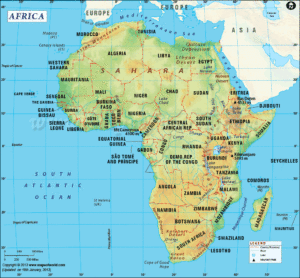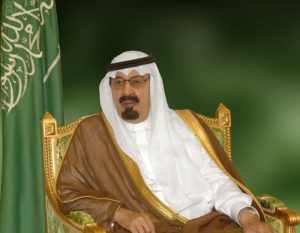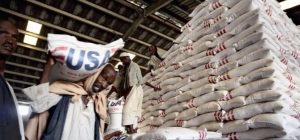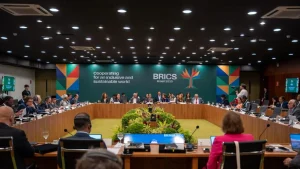 African Economy: Facts and Figures
African Economy: Facts and Figures
by Syarif Hidayat*
In March 2013, Africa was identified as the world’s poorest inhabited continent; however, the World Bank expects that most African countries will reach “middle income” status (defined as at least US$1,000 per person a year) by 2025 if current growth rates continue. In 2013, Africa was the world’s fastest-growing continent at 5.6% a year, and GDP is expected to rise by an average of over 6% a year between 2013 and 2023. Growth has been present throughout the continent, with over one-third of Sub-Saharan African countries posting 6% or higher growth rates, and another 40% growing between 4% to 6% per year.
Africa’s macroeconomic prospects remain favourable. In 2013, Africa maintained an average growth rate of about 4%. This compares to 3% for the global economy and underscores again the continent’s resilience to global and regional headwinds. However, growth performance varied widely across country classifications and regions.
African countries have a real opportunity to capitalize on their resource endowments and high international commodity prices, as well as on opportunities from changes in the global economy to promote economic transformation through commodity-based industrialization and to address poverty, inequality and unemployment. If grasped, these opportunities will help Africa promote competitiveness, reduce its dependence on primary commodity exports and associated vulnerability to shocks and emerge as a new global growth pole.
Also Read: Boycott of Zionism, The Most Powerful Weapon
The economy of Africa consists of the trade, industry, agriculture, and human resources of the continent. As of 2012, approximately 1.07 billion people were living in 54 different countries in Africa. Africa is a resource-rich continent but many African people are poor. Recent growth has been due to growth in sales in commodities, services, and manufacturing. Sub Saharan Africa, in particular, is expected to reach a GDP of $29 trillion by 2050 but its income inequality will be a major deterrent in wealth distribution.
| Economy of Africa | |
|---|---|
| Statistics | |
| Population | 1.1 billion (15%; 2013[1]) |
| GDP | Currency: US$2.39 trillion, €1.80 trillion (2013) PPP: US$ 3.757 trillion (2013) |
|
GDP growth
|
Per capita: 5.16% (2004–2006) |
|
GDP per capita
|
Currency: US$2,320, €1,692 (2013) PPP: US$1,968, €1,500 (2009) |
| 100,000 (1%) | |
|
Top 10% income
|
44.7% |
| People living less than US$1 per day | 36.2% |
| External | |
|
External debt as % of GDP
|
60.7% (1998) 25.5% (2007) IMF |
|
External debt payments as % of GDP
|
4.2% 3.0% (2007) IMF |
|
Foreign-aid revenue as % of GDP
|
3.2% (2001) |
| Numbers from the UNDP and AfDB. Most numbers exclude some countries for lack of information. Since these tend to be the poorest nations, these numbers tend to have an bias. Numbers are mostly from 2002.
All values, unless otherwise stated, are in US dollars.
|
|
Current conditions
In the past ten years, growth in Africa has surpassed that of East Asia Data suggest parts of the continent are now experiencing fast growth, thanks to their resources and increasing political stability and ‘has steadily increased levels of peacefulness since 2007’. The World Bank reports the economy of Sub-Saharan African countries grew at rates that match or surpass global rates.
Also Read: BRIN Officially Launches InaRI Expo 2025
The economies of the fastest growing African nations experienced growth significantly above the global average rates. The top nations in 2007 include Mauritania with growth at 19.8%, Angola at 17.6%, Sudan at 9.6%, Mozambique at 7.9% and Malawi at 7.8%.[ Other fast growers include Rwanda, Mozambique, Chad, Niger, Burkina Faso, Ethiopia. Nonetheless, growth has been dismal, negative or sluggish in many parts of Africa including Zimbabwe, the Democratic Republic of the Congo, the Republic of the Congo and Burundi. Many international agencies are gaining increasing interest in investing emerging African economies, especially as Africa continues to maintain high economic growth despite current global economic recession. The rate of return on investment in Africa is currently the highest in the developing world.
Debt relief is being addressed by some international institutions in the interests of supporting economic development in Africa. In 1996, the UN sponsored the Heavily Indebted Poor Countries (HIPC) initiative, subsequently taken up by the IMF, World Bank and the African Development Fund (AfDF) in the form of the Multilateral Debt Relief Initiative (MDRI). As of 2013, the initiative has given partial debt relief to 30 African countries.
Trade growth
Trade has driven much of the growth in Africa’s economy in the early 21st century. China and India are increasingly important trade partners; 12.5% of Africa’s exports are to China, and 4% are to India, which accounts for 5% of China’s imports and 8% of India’s. The Group of Five (Indonesia, Malaysia, Saudi Arabia, Thailand, and the United Arab Emirates) are another increasingly important market for Africa’s exports.
Also Read: “Free Palestine” Echoes at Prambanan Jazz Festival 2025
Future
Africa’s economy—with expanding trade, English language skills (official in many Sub-Saharan countries), improving literacy and education, availability of splendid resources and cheaper labour force—is expected to continue to perform better into the future. Trade between Africa and China stood at US$166 billion in 2011.
Africa will experience a “demographic dividend” by 2035, when its young and growing labour force will have fewer children and retired people as dependents as a proportion of the population, making it more demographically comparable to the US and Europe. It is becoming a more educated labour force, with nearly half expected to have some secondary-level education by 2020. A consumer class is also emerging in Africa and is expected to keep booming. Africa has around 90 million people with household incomes exceeding $5,000, meaning that they can direct more than half of their income towards discretionary spending rather than necessities. This number could reach a projected 128 million by 2020.
During the President of the United States Barack Obama’s visit to Africa in July 2013, he announced a US$7 billion plan to further develop infrastructure and work more intensively with African heads of state. A new program named Trade Africa, designed to boost trade within the continent as well as between Africa and the U.S., was also unveiled by Obama.
Also Read: Boy Dancer Puts Pacu Jalur Culture on the Global Stage
African countries by GDP
| Country | Total GDP (nominal) (billion US$) |
GDP per capita (US$, PPP) |
GDP Growth, 2007-2011 (in %) |
HDI |
|---|---|---|---|---|
| 188.7 | 8,715 | 2.7 | 0.733 | |
| 101.0 | 5,930 | 9.1 | 0.446 | |
| 7.3 | 1,628 | 3.9 | 0.437 | |
| 17.6 | 14,753 | 3.0 | 0.654 | |
| 10.2 | 1,310 | 4.9 | 0.370 | |
| 2.3 | 608 | 4.3 | 0.413 | |
| 25.5 | 2,383 | 3.1 | 0.532 | |
| 1.9 | 4,123 | 5.8 | 0.736 | |
| 2.2 | 816 | 2.8 | 0.384 | |
| 9.5 | 1,531 | 2.9 | 0.388 | |
| 0.6 | 1,117 | 1.5 | 0.561 | |
| 15.6 | 375 | 5.9 | 0.411 | |
| 14.7 | 4,429 | 4.9 | 0.548 | |
| 24.1 | 1,803 | 1.1 | 0.432 | |
| 1.0 (2009) | 2,290 (2009) | 5.3 | 0.516 | |
| 229.5 | 6,324 | 5.2 | 0.708 | |
| 19.8 | 36,515 | 8.8 | 0.642 | |
| 2.6 | 589 | 1.3 | 0.483 | |
| 31.7 | 1,116 | 9.7 | 0.406 | |
| 17.1 | 15,960 | 3.6 | 0.677 | |
| 1.1 | 2,135 | 6.0 | 0.502 | |
| 39.2 | 1,884 | 8.3 | 0.553 | |
| 5.1 | 1,128 | 2.4 | 0.456 | |
| 1.0 | 1,251 | 3.6 | 0.374 | |
| 33.6 | 1,718 | 4.2 | 0.521 | |
| 2.4 | 1,715 | 4.9 | 0.549 | |
| 1.2 | 577 | 11.6 | (N/A) | |
| 62.4 (2009) | 16,855 (2009) | 4.0 | 0.769 | |
| 9.9 | 972 | 2.3 | 0.533 | |
| 5.7 | 918 | 6.8 | 0.437 | |
| 10.6 | 1,099 | 4.5 | 0.380 | |
| 4.1 | 2,571 | 2.8 | 0.550 | |
| 11.3 | 14,523 | 4.5 | 0.804 | |
| 100.2 | 4,986 | 4.3 | 0.646 | |
| 12.8 | 982 | 6.9 | 0.384 | |
| 12.3 | 6,826 | 3.7 | 0.650 | |
| 6.0 | 732 | 4.3 | 0.374 | |
| 509.9 (2013) | 5,863 (World Bank) | 6.8 | 0.670 | |
| 15.98[48] | 8,233 (nominal)[48] | 0.850 (2003)[49] | ||
| 6.4 | 1,251 | 7.3 | 0.452 | |
| 0.2 | 2,058 | 5.7 | 0.654 | |
| 14.3 | 1,981 | 3.5 | 0.499 | |
| 1.0 | 26,420 | 4.2 | 0.843 | |
| 2.2 | 877 | 5.2 | 0.336 | |
| (N/A) | (N/A) | (N/A) | (N/A) | |
| 408.2 | 11,035 | 2.7 | 0.674 | |
| 55.1 | 2,141 | 4.1 | 0.526 | |
| 4.0 | 6,099 | 2.1 | 0.547 | |
| 23.7 | 1,521 | 6.8 | 0.467 | |
| 3.6 | 1,042 | 3.1 | 0.512 | |
| 45.9 | 9,415 | 3.0 | 0.766 | |
| 16.8 | 1,354 | 7.4 | 0.505 | |
| 19.2 | 1,623 | 6.4 | 0.434 | |
| 9.9 | (N/A) | 0.6 | 0.513 |
Africa’s 10 biggest economies
Kenya has rebased its GDP measurement year to 2009, boosting its GDP data by 25%, and entering it into the top 10 economies on the African continent.
Kenya is the second African country to re-base its GDP measurement in 2014, following a similar move by Nigeria earlier in the year.
Also Read: High Rainfall Leads to Flooding in 51 Jakarta Neighborhoods
Nigeria’s rebasing saw it overtake South Africa as the continent’s biggest economy, with a GDP contribution of over US$521 billion in 2013, versus South Africa’s $350.6 billion, World Bank data shows.
According to data from the World Bank, Kenya’s GDP contribution in 2013 previously stood at US$44.1 billion – a figure which has now grown by over 25% to approximately US$55.2 billion.
“Economies are dynamic in nature: they grow, they shrink, they add new sectors, new products and new technologies, and consumer behaviour and tastes change over time,” the Kenyan National Bureau of Statistics (KNBS) said
“Rebasing is used to account for these changes, so as to give a more current snapshot of the economy.”
KNBS said that agriculture, manufacturing and real estate accounted for most of the change in the rebasing – the 6th revision since 1947.
“ICT treated as a stand alone sector compared to the previous estimates…[and] there are no dramatic differences in the structure of the economy in broadly defined categories,” the group said.
Kenya’s new GDP positioning places the economy as the 9th largest on the continent (from 12th position previously), ahead of Ghana.
Also Read: Indonesia Designates July 7 as National Librarian Day
Top 10 African economies by GDP
| # | Country | GDP |
| 1 | Nigeria | $521.8 billion |
| 2 | South Africa | $350.6 billion |
| 3 | Egypt | $271.9 billion |
| 4 | Algeria | $210.2 billion |
| 5 | Angola | $121.7 billion |
| 6 | Morocco | $104.4 billion |
| 7 | Libya | $75.4 billion |
| 8 | Sudan | $66.5 billion |
| 9 | Kenya | $55.2 billion |
| 10 | Ghana | $47.9 billion |
(World Bank Data, 2013)
Taking the International Monetary Fund’s (IMF) 2014 World Economic Outlook report for the next three years and projecting it against GDP data from the World Bank, it shows that the outlook for Africa’s top economies will not yield much change on the continent.
Kenya’s rebased GDP contribution looks set to keep climbing towards US$66.3 billion by 2016, maintaining its spot as the 9th biggest economy on the continent.
When looking at GDP per capita amongst Africa’s top 10 economies – a measure which some economists view as a fairer assessment of the state of a country’s economy – the picture shifts quite significantly.
Nigeria – the biggest economy – slips to 7th, with only US$2,710 per citizen, while Africa’s number 2 economy, South Africa, maintains its positioning with US$7,190 per person.
Libya takes the top spot with an overage of over US$11,000 per citizen.
Also Read: Central Java Encourages Toros Farm to Scale Up Halal Meat Production Across Indonesia
After its rebasing, Kenya’s GDP per capita has increased from US$994 to US$1,246 – still 9th amongst the top 10 economies.
Top 10 African GDP economies by GDP per capita
| # | Country | GDP |
| 1 | Libya | $11,046 |
| 2 | South Africa | $7,190 |
| 3 | Algeria | $5,290 |
| 4 | Angola | $5,010 |
| 5 | Egypt | $3,160 |
| 6 | Morocco | $3,030 |
| 7 | Nigeria | $2,710 |
| 8 | Ghana | $1,760 |
| 9 | Kenya | $1,246 |
| 10 | Sudan | $1,130 |
(World Bank Data, 2013)
Global outlook
According the IMF’s outlook report, the world’s Gross Domestic Product (GDP) in 2013 stood at approximately $73.98 trillion.
The IMF expects total global output (real GDP) to increase by 3.6% in 2014 to US$76.8 trillion, with an annual growth rate of just under 4% to follow through to 2019 to reach just over US$100.8 trillion.
Also Read: Floods and Landslides Hit Multiple Regions in Indonesia
Of the world’s total GDP, North Africa (and the Middle East) and Sub-Saharan Africa contribute US$3.13 trillion and US$1.32 trillion, respectively, reflecting 6.0% of the global GDP.
These figures are projected to hit US$4.4 trillion and US$2.0 trillion for Northern and Southern Africa, respectively, by 2019 – reflecting a 6.3% contribution to the global total. (T/P3/R01)
Mi’raj Islamic News Agency (MINA)
 *Senior Editor of Mi’raj Islamic News Agency (MINA) (He can be contacted via emails: [email protected] and [email protected])
*Senior Editor of Mi’raj Islamic News Agency (MINA) (He can be contacted via emails: [email protected] and [email protected])
Also Read: Jambi Province Marks 10th of Muharram by Providing Aid for Orphans
Bibliotheque:
1.International News Agencies
2.International Online Media
3.International Monetary Fund (IMF) Reports
4.World Bank Reports
5.African Development Bank (ADB) Reports
6.The UN reports
Also Read: Minister of Religious Affairs Urges Public to Resist Western Influence on Marriage




































 Mina Indonesia
Mina Indonesia Mina Arabic
Mina Arabic